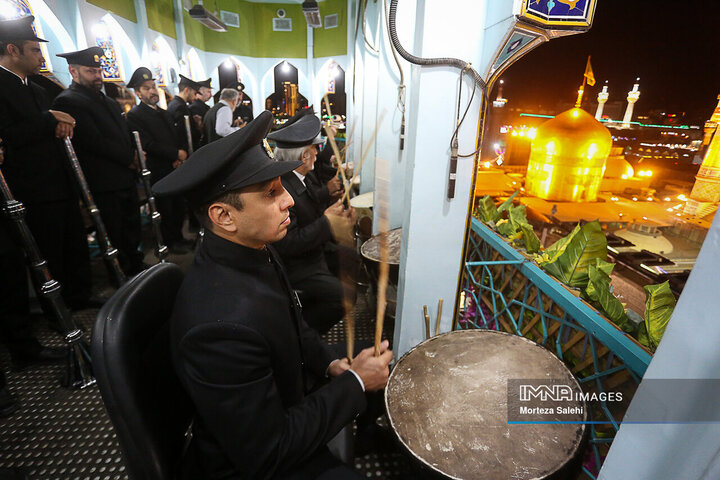Iran (IMNA) - Within the confines of the shrine, adorned with intricate Islamic tiles and towering minarets that seem to touch the heavens, the atmosphere is charged with a sacred fervor.
Under the watchful gaze of the luminous dome, musicians adorned in traditional attire take their positions.
Amidst the flickering glow of lights and the scent of incense mingling with whispers of prayers, the Karnay begins its solemn call. Its haunting timbre, ancient and eternal, reverberates through the sacred space, reaching the depths of souls gathered in quiet contemplation.
Beside the Karnay stands the Naghareh, its majestic form illuminated by the gentle glow of moonlight filtering through stained glass. With each beat of its drum, the Naghareh announces the passage of time, marking the moments that lead to the dawn of Nowruz. Its rhythmic cadence, like the heartbeat of the universe, guides the faithful through the threshold of a new beginning.
Together, Karnay and Naghareh weave a tapestry of sound, each note a thread in the fabric of creation itself. Their symphony transcends mere music, becoming a sacred invocation that binds the present to the eternal, the mundane to the divine.
The melodies that ensue are not merely notes but prayers set to music, a symphony of devotion that pierces the veil between the earthly realm and the divine.
In this timeless moment, believers are transported beyond the confines of earthly existence, drawn into the embrace of something greater than themselves.
As the night unfolds in a dance of shadows and light, the melody of Karnay and the rhythm of Naghareh echo across the expanse of the shrine, carrying the hopes and dreams of a people united in faith and reverence. And as the first light of dawn breaks upon the horizon, it heralds not only the arrival of Nowruz but also the promise of renewal and rebirth, echoing through the ages in the sacred symphony of Karnay and Naghareh.


Your Comment